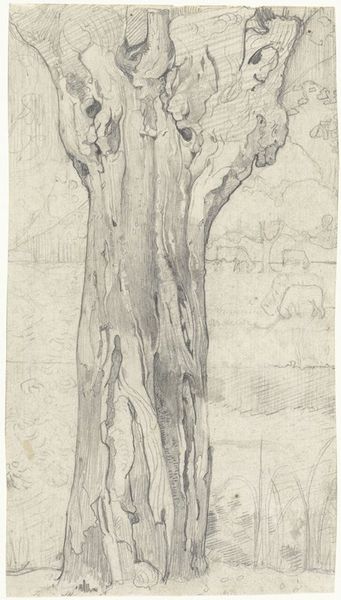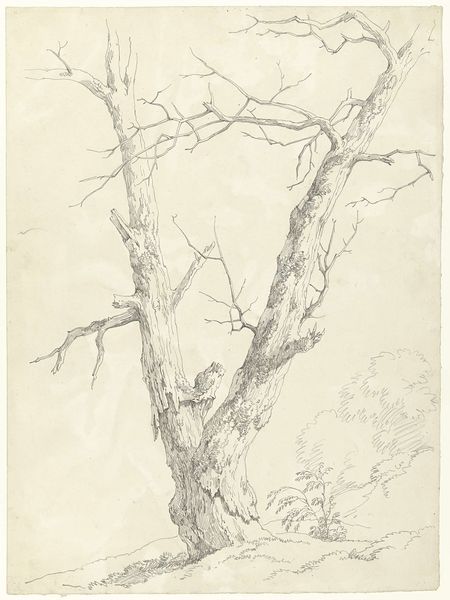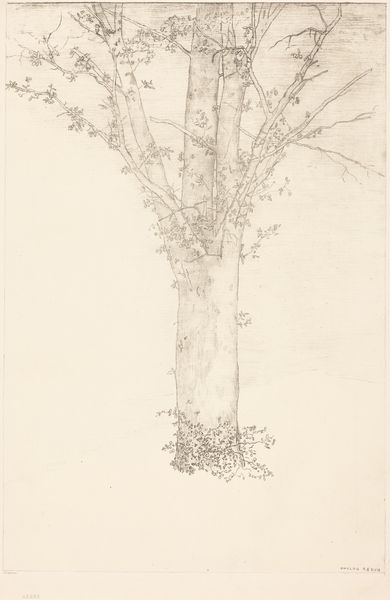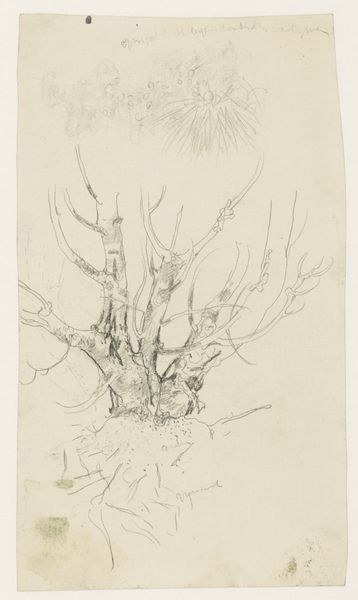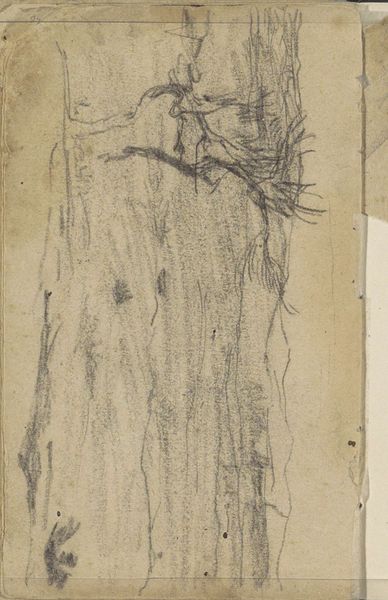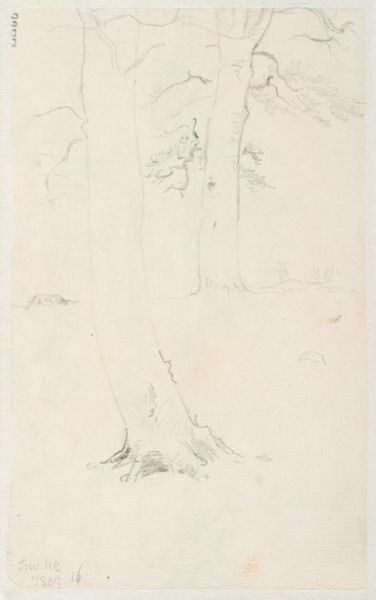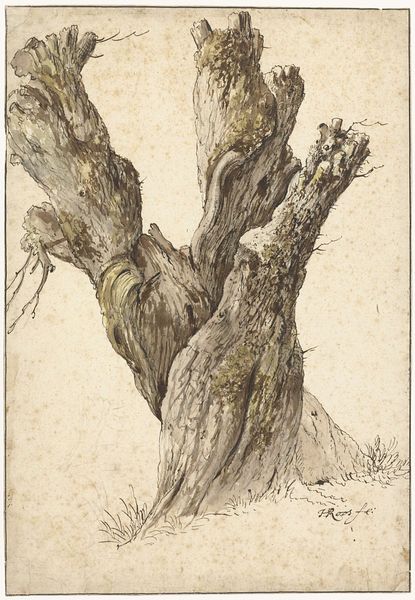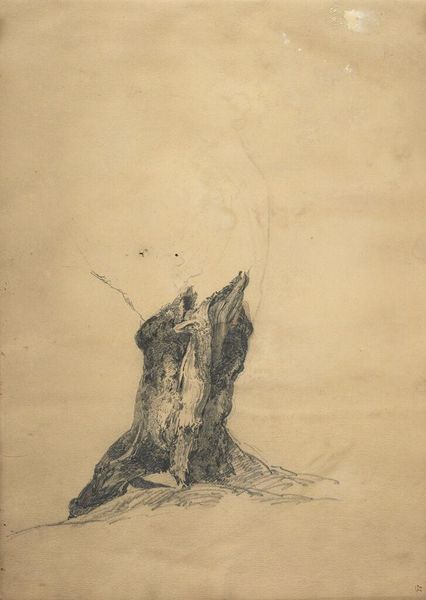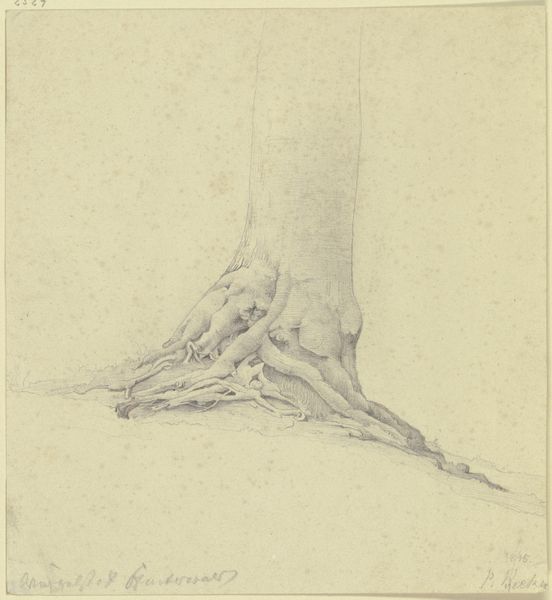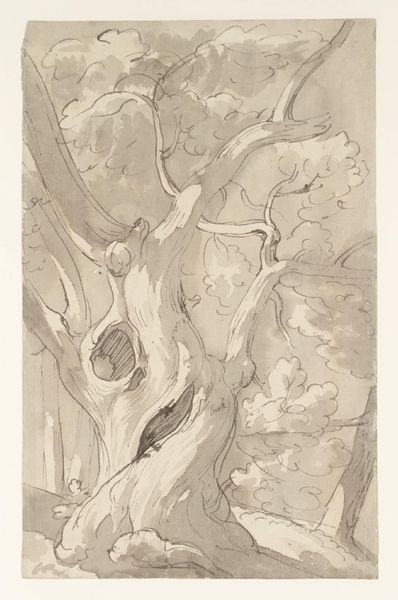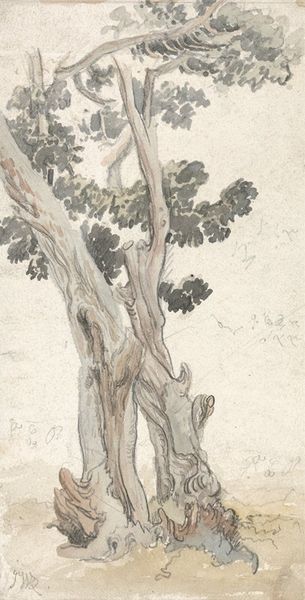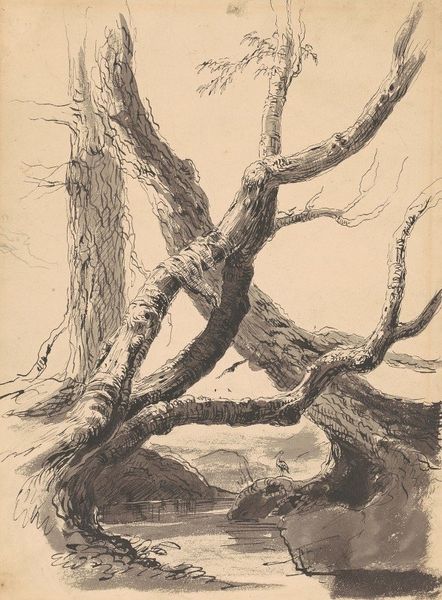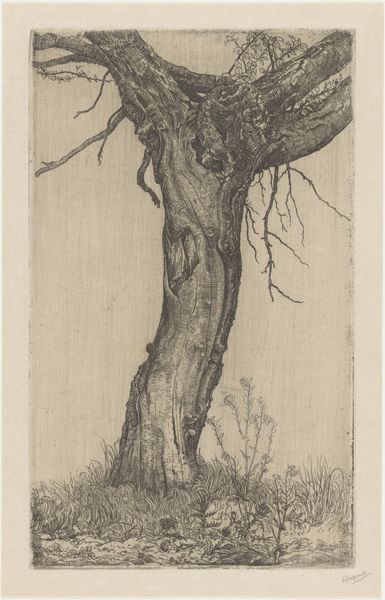
drawing, paper, ink, pen
#
drawing
#
pen sketch
#
landscape
#
paper
#
ink
#
pen
Copyright: Public Domain: Artvee
Curator: This detailed pen and ink drawing, created by Richard Nicolaüs Roland Holst between 1878 and 1938, is titled "Dikke boomstam," meaning "Thick Tree Trunk." It’s rendered on paper. Editor: The texture is extraordinary. The stippling makes the tree's bark seem almost…ancient, weathered by countless seasons. I imagine it looming over a very old landscape. Curator: Holst’s work often explored the symbolic weight of nature, and the tree as an image is practically overflowing with connotations. For many cultures, it represents life, growth, connection, and ancestry. Editor: Absolutely. It's as though Holst is capturing not just a tree, but the very idea of a tree – a sort of ur-tree, solid and resilient. The intricate detailing suggests painstaking observation but it’s clearly loaded with symbolic power, going back to those pre-Christian "sacred groves." Curator: Right, and notice the deliberate lack of any contextual setting. This isolates the trunk, emphasizing its solidity and timelessness, perhaps inviting the viewer to reflect on the enduring strength of the natural world. This technique makes us reflect about its placement within the tradition of Dutch landscape drawings and how trees played such a symbolic role throughout landscape painting tradition Editor: And there's something almost confrontational in its presence, looming so large in the composition. It demands our attention, makes us consider our own fragility compared to the tree’s enduring nature. How do you think his contemporary audiences received such work, and in what kind of cultural environments were they appreciated? Curator: Interesting. During that period, there was a rising trend that looked to the natural world as an antidote to the fast industrializing societies and cityscapes. Images of rootedness in the soil represented a need to feel grounded and more authentic in our own identities. The drawing almost visualizes cultural memories in itself. Editor: I hadn’t quite thought of the artwork as a mirror to cultural anxiety. I had primarily perceived its compositional strengths and that sense of imposing longevity. Considering this drawing from its broader cultural and social implications certainly shifts our understanding of both the tree and ourselves in it. Curator: Yes. By studying seemingly straightforward depictions like this drawing, we begin to unpack larger meanings behind our human need to define our cultural and existential questions through tangible imageries and representation.
Comments
No comments
Be the first to comment and join the conversation on the ultimate creative platform.
